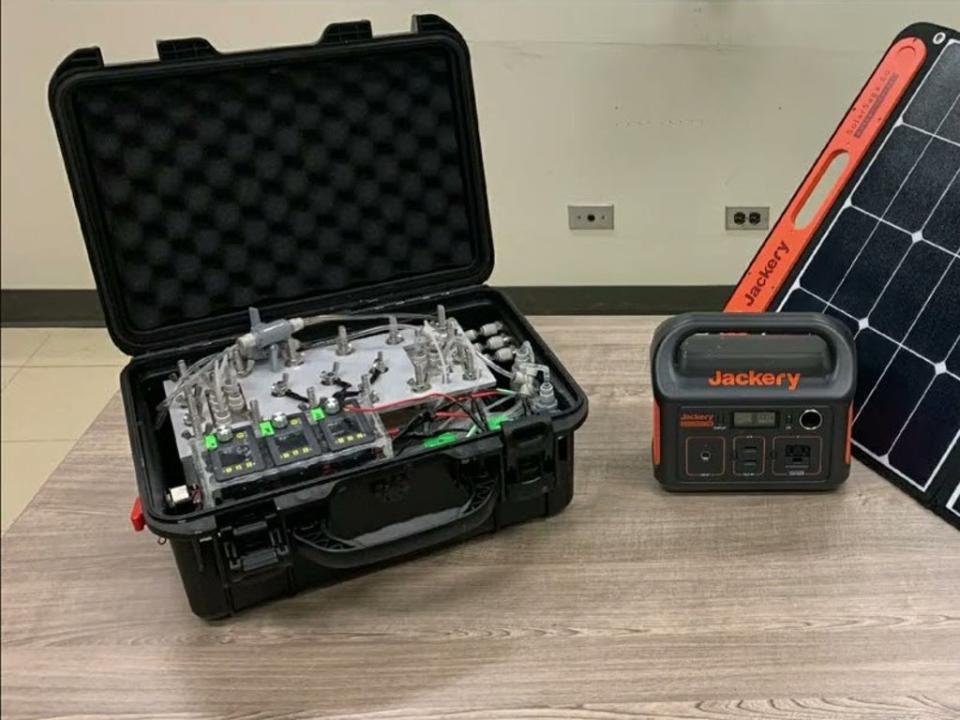New invention turns seawater into drinking water at the push of a button

Researchers have invented a desalination device that can turn seawater into drinking water at the push of a button.
The technology uses a technique that essentially zaps the water with electicity in order to remove salt molecules, bacteria and viruses. This eliminates the need for replacement filters and high pressure pumps, which current commercially available desalination units require.
Packaged in a suitcase-sized device, it weighs less than 10 kilograms and can be powered with a portable solar panel.
This makes it suitable for use in remote and severely resource-limited areas, according to the team at Massachusetts Institute of Technology (MIT) who developed it.
“This is really the culmination of a 10-year journey that I and my group have been on,” said Jongyoon Han, a professor of electrical engineering at MIT.
“We worked for years on the physics behind the individual desalination processes, but pushing all those advances into a box, building a system, and demonstrating it in the ocean, that was a really meaningful and rewarding experience for me.”
The water generated by the desalination unit exceeds World Health Organisation quality standards thanks to a two-stage process that removes both dissolved and suspended solids.
It is designed to be used by nonexperts, and can be controlled wirelessly through a companion smartphone app.

A prototype was successfully tested, generating 0.3 litres of drinking water per hour straight from the sea.
“Right now, we are pushing our research to scale up that production rate,” said research scientist Junghyo Yoon.
“This is definitely an exciting project, and I am proud of the progress we have made so far, but there is still a lot of work to do.”
Along with increasing the production rate, other scientists who were not involved with the research have noted other limitations with the current prototype.
Professor Nidal Hilal, director of the New York University Abu Dhabi Water research centre, said the setup requires expensive materials.
“It would be interesting to see similar systems with low-cost materials in place,” he said.
A paper detailing the device, titled ‘Portable seawater desalination system for generating drinkable water in remote locations’, was published in the scientific journal Environmental Science and Technology.
